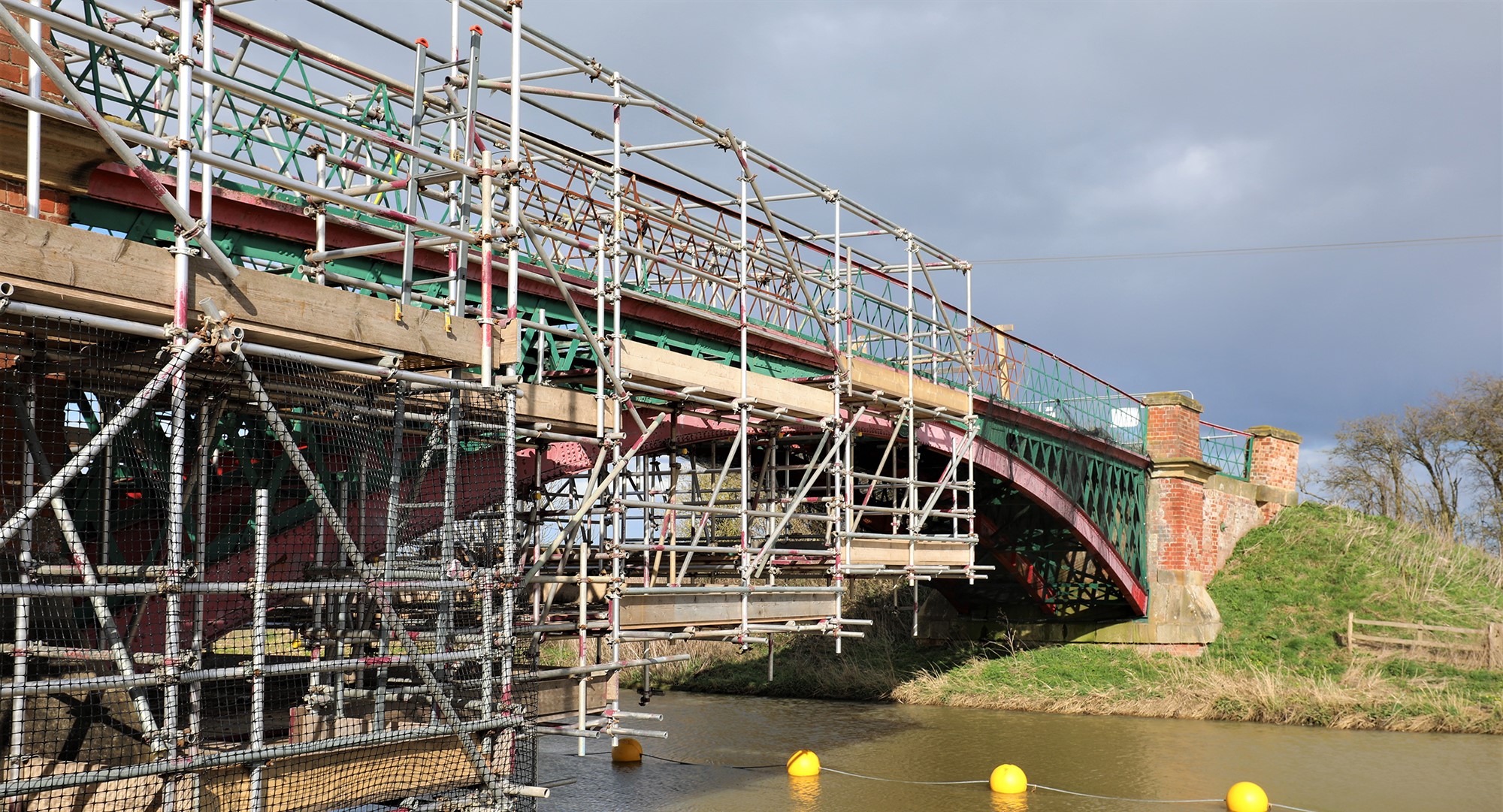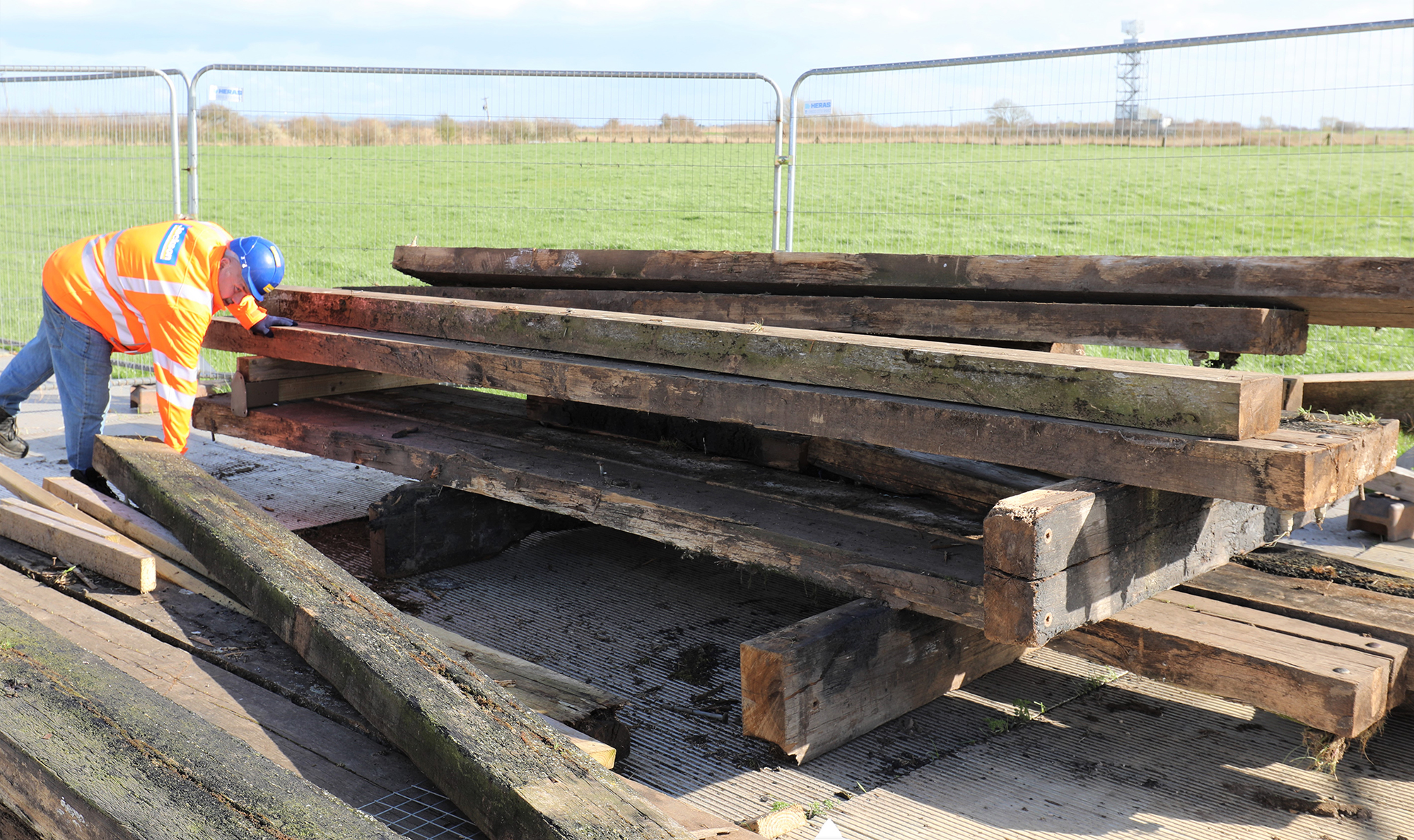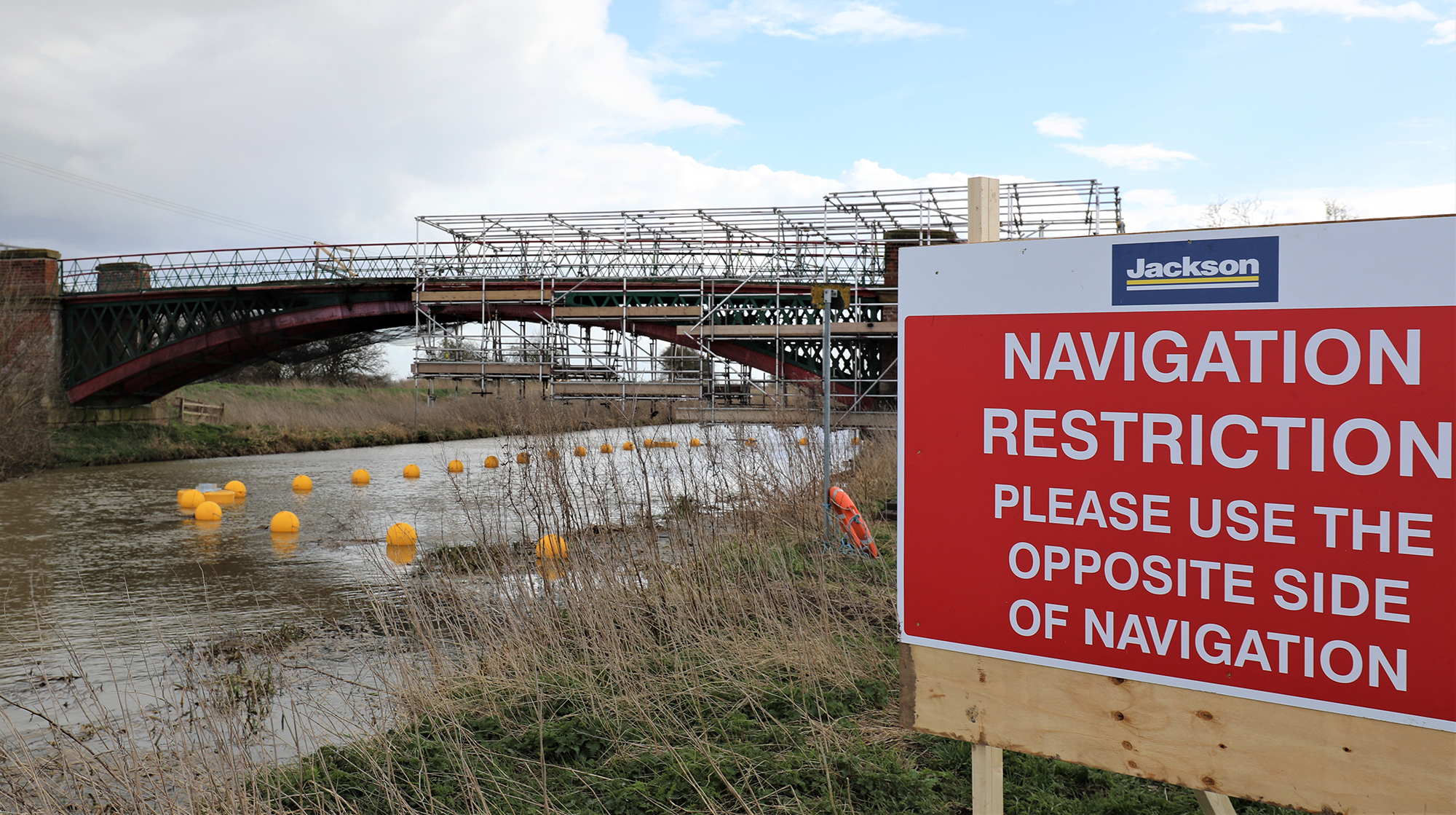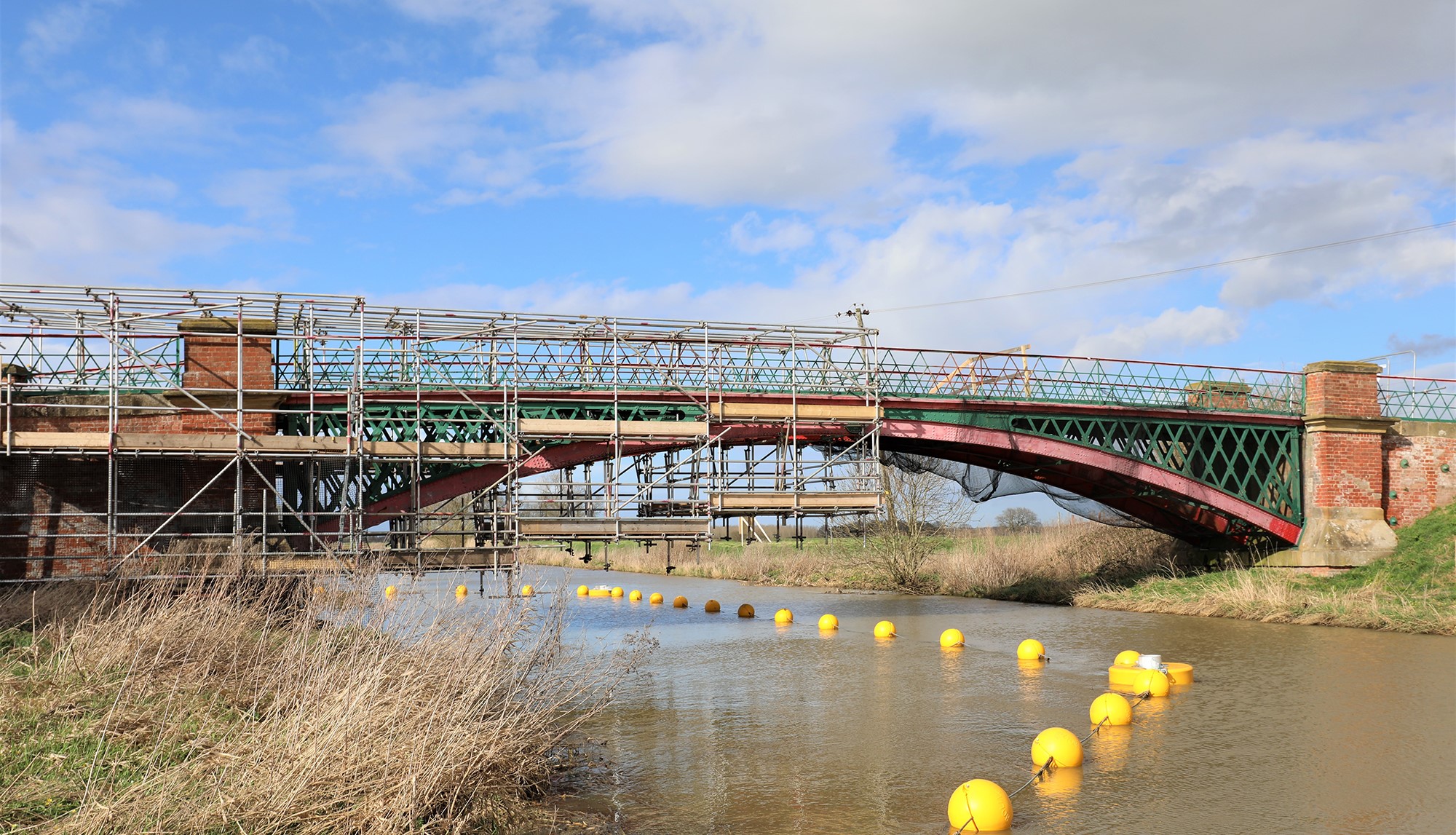A Jackson team has started work refurbishing a historic iron bridge in North Lincolnshire on behalf of the Environment Agency.
The Grade II-listed Hibaldstow Bridge spans the River Ancholme near the village of Hibaldstow. It was erected in 1889 and is owned by the Environment Agency.
The bridge was damaged after a van was deliberately set alight on it in April 2019. The fire burnt through areas of the bridge's wooden deck and weakened parts of its metal structure. The damaged area was secured and a walkway for pedestrian and cyclist usage was enabled.
A Jackson team has been on site since the beginning of March and is expected to be there until the end of September to complete the £1.3m refurbishment project.

Work programme
The work will include removal of the timber deck and replacement of some of the metal work including some cross beams and railings. The entire bridge will be grit-blasted back to the original metal and then repainted in the original green and red.
The new deck will be replaced with English oak timbers and any of the old wood that is not fire-damaged will be salvaged for use on repairs of other bridges.

'We are pleased to be able to be undertaking these works to ensure that this historic bridge can continue to be used by the local community.'
Andrew Usborne, Project Executive, Environment Agency
Navigation
The bridge will be repaired in two halves in order to keep the river navigation open to river users. The side where the scaffolding is currently up has been closed off using a boom and signage is in place to notify river users.
Site foreman Ian Clayton has visited the boat club at the nearby town of Brigg to let them know that the work is being carried out here over the spring and summer. Signs are in place to inform local walkers that there is no access over the bridge.

Bird's nest
The bridge will be encased in a ‘bird nest’ scaffolding to catch all the detritus from the grit blasting, so it can be removed from site. Tests have been carried out on samples of paint and there is a small percentage of lead in the older paint layers, which will be appropriately disposed of.
The site cabins are being powered by solar panels and the grit-blaster will run on HVO fuel to reduce carbon emissions.
